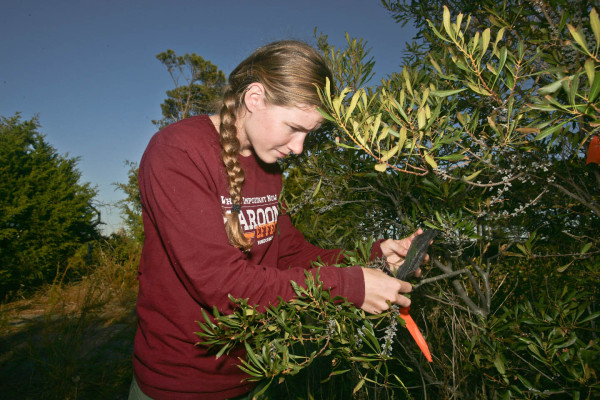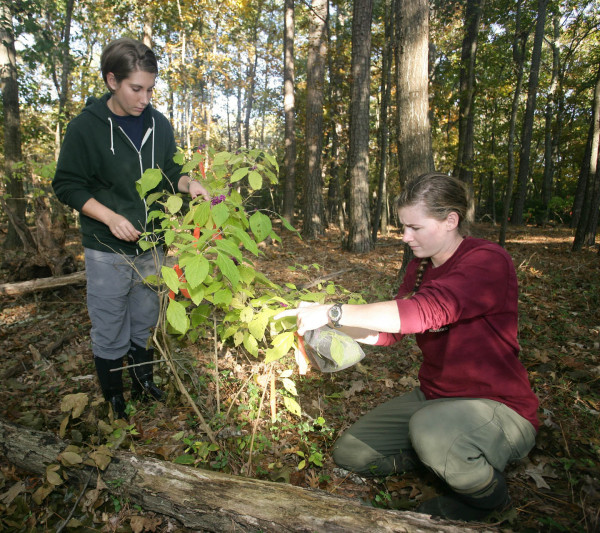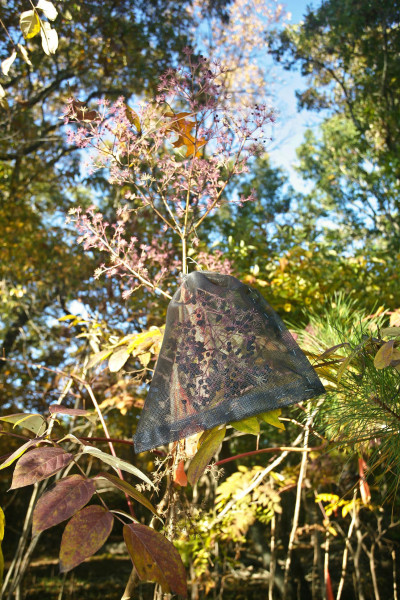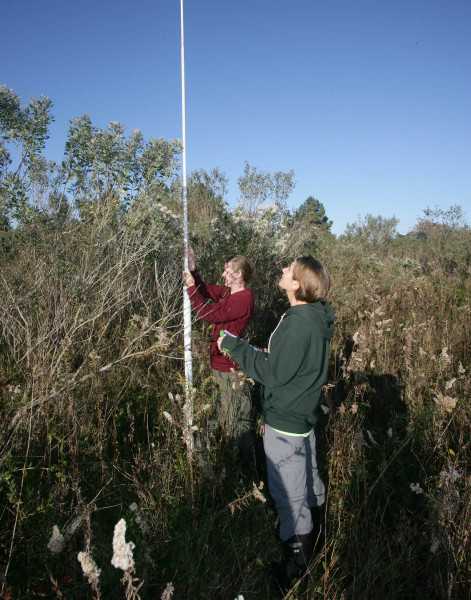Evaluating the Supply Side of Bird Migration within a Fall Staging Site
Virginia Red-cockaded Woodpeckers Continue to Surpass Expectations
January 12, 2015Virginia Peregrine Falcon 2014 Update
January 13, 2015
The lower Delmarva Peninsula is one of the most significant migration bottlenecks in eastern North America where large numbers of birds become concentrated within a relatively small land area. Migrants stopping on the lower Delmarva Peninsula are attempting to replenish their energy reserves by accessing food resources in often unfamiliar habitats. Previous research conducted by the CCB has documented the number of migrant birds using forested and shrub habitats on the lower Delmarva. This work has allowed us to project the amount of energy required to maintain a positive energy budget for the migrant community. A central management objective within this landscape is to provide an energy source for migrating birds (i.e., birds are provided with opportunity for a net energy gain) rather than an energy sink (i.e., the peninsula cannot meet energetic demands). Realizing this success requires an understanding of relative supply and demand.

Sarah Rosche inspects rates of fruit loss on a wax myrtle shrub to help calculate a relative index of fruit choice among migrating birds. Photo by Bart Paxton.

Arianne Millet (left) and Sarah Rosche (right) monitor beautyberry plants for fruiting phenology and avian consumption. Photo by Bart Paxton.
Fall fruits are an important food resource for birds during autumn migration because of their relatively high availability and because they are packed with high energy lipids that can be utilized directly or stored as fat. A large number of migrant species rely on insects during the breeding season but shift to a diet of fruit during autumn migration. Frugivorous birds account for nearly 60% of the total energetic demand of migrating birds using the Peninsula. Most of these birds are short-distance migrants that remain in North America throughout the annual cycle but also include many Neotropical migrants that are in route towards wintering areas located within the Caribbean or Central and South America. Providing and maintaining habitats with sufficient fruit resources to meet these species energetic demands would be a primary management land objective for the lower Delmarva Peninsula.

Fruit consumption was monitored on 240 individual plants by comparing exposed and bagged limbs. Bags help determine the background rate of fruit loss from natural dropping so rates of consumption can be determined. This devil’s walking stick is heavily stripped as evidence by the relative number of bagged fruits remaining. Photo by Bart Paxton.

Sarah (left) and Arianne (right) measure fruiting plant density using a robel pole. This technique was used at 2,120 locations across 9 forest and 9 shrub patches. Photo by Bart Paxton.
We began field work during the autumn of 2014 to assess fruit availability, fruit nutrient content, and fruit use by migrant birds in shrub and forested habitats. The project has been funded by the United States Fish and Wildlife Service and in collaboration with the Eastern Shore National Wildlife Refuge and Scott McWilliams at the University of Rhode Island. Shrub and forest habitats differ markedly in physical structure and possibly fruit availability. These habitats also represent significantly different management endpoints that can be controlled by management intensity. Conservation agencies are currently formalizing long-range plans to benefit migrant birds with either shrub or forest as the ultimate vegetation condition for habitat parcels. Research like this is critical to informing final conclusions. The results of this project are pending analysis but will provide the first look at how well the lower Delmarva is servicing the energy demands of migrant landbirds and will help plot a course for future management decisions.
Written by Mike Wilson | mdwils@wm.edu | (757) 221-1649
& Bryan Watts | bdwatt@wm.edu | (757) 221-2247
January 13, 2015
Learn More:
Virginia hospitality: realizing a vision



